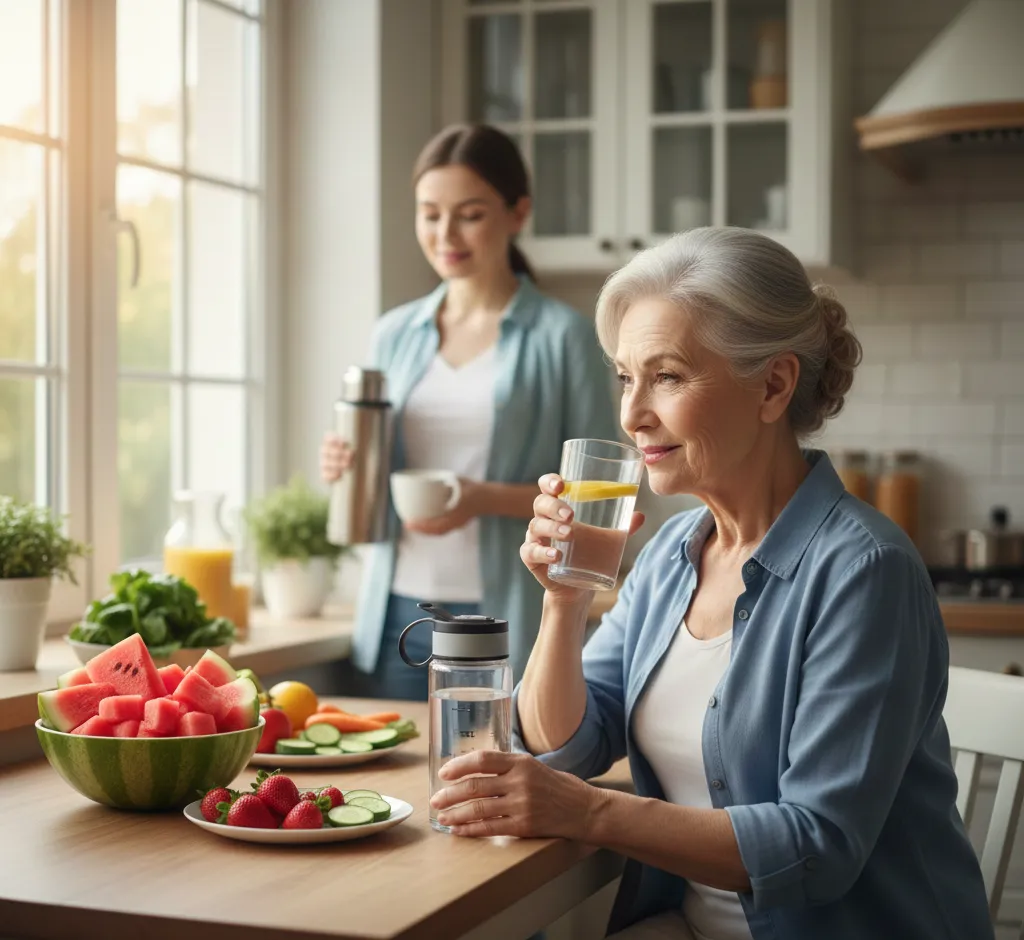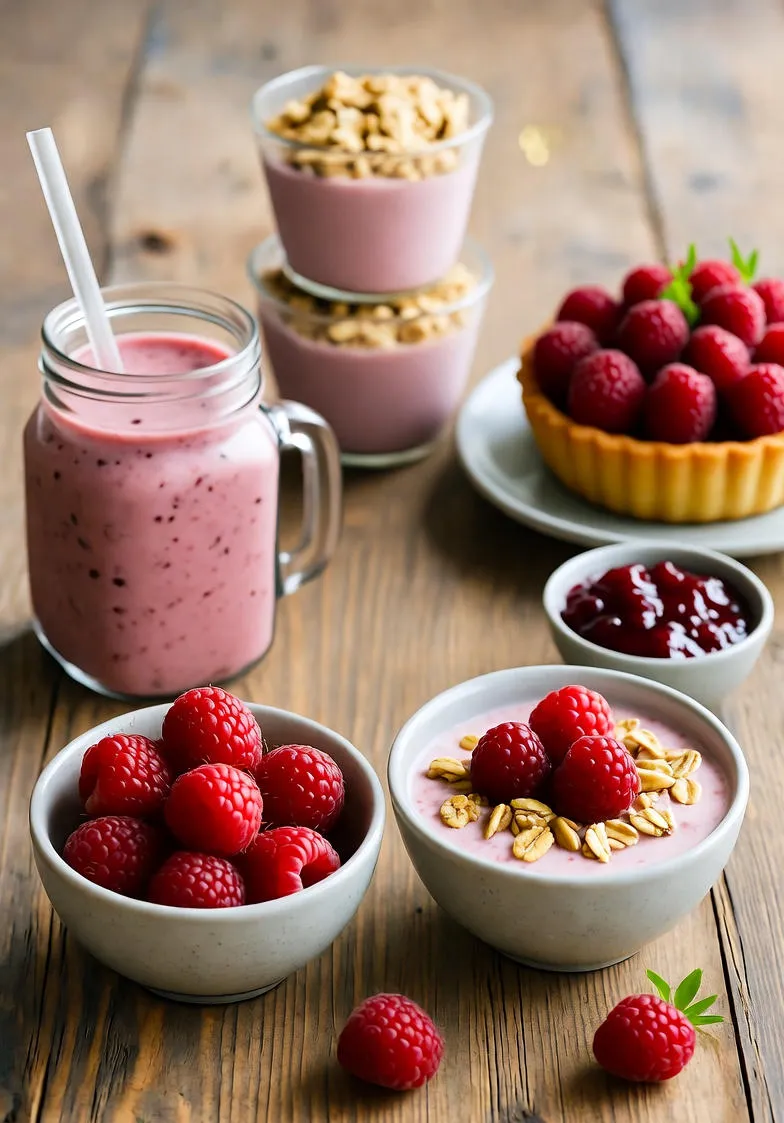Essential Hydration: A Comprehensive Guide to Water Intake for Seniors and Dehydration Prevention
A comprehensive guide for seniors and caregivers on preventing dehydration. Learn the silent signs, understand physiological challenges, and get actionable tips for optimal daily water intake to boost health and cognition.

Dehydration is a serious health risk that disproportionately affects older adults. As we age, changes in our bodies—including a diminished sense of thirst, certain medications, and decreased kidney function—can make maintaining adequate hydration a daily challenge. Understanding these risks and implementing simple, proactive strategies is crucial for promoting health, energy, and cognitive function in the senior years.
This comprehensive guide delves into the physiology of hydration in older adults, outlines the silent warning signs of dehydration, and provides practical, evidence-based methods for ensuring consistent water intake to maintain optimal well-being.
The Physiological Challenges of Senior Hydration
Why are older adults more vulnerable to dehydration? The reasons are multifaceted and often work in combination:
- Reduced Thirst Sensation: The body's natural thirst mechanism becomes less sensitive with age, meaning seniors may not feel thirsty until they are already significantly dehydrated.
- Decreased Total Body Water: The percentage of body weight composed of water decreases over a lifetime. This leaves less of a 'reserve' when fluid loss occurs.
- Changes in Kidney Function: The kidneys become less efficient at conserving water and concentrating urine, leading to increased fluid loss, especially when fluid intake is low.
- Medication Side Effects: Many common medications, such as diuretics (for high blood pressure) or laxatives, can increase fluid loss.
- Mobility and Cognitive Issues: Physical limitations or memory issues can make it harder for seniors to independently access and consistently drink fluids throughout the day.
Silent Signs: Recognizing Dehydration Before It Becomes a Crisis
Dehydration doesn't always present as intense thirst. In seniors, the symptoms can be subtle and easily mistaken for other age-related conditions. Early detection is vital:
Mild to Moderate Dehydration Symptoms:
- Fatigue and Dizziness: Unexplained tiredness, lack of energy, or lightheadedness, particularly when standing up.
- Dry Mouth and Skin Turgor: A persistently dry, sticky mouth. While less reliable in seniors, slow skin turgor (pinching the skin on the forearm; if it takes a long time to return to normal) can be a sign.
- Constipation: A very common and often overlooked sign, as the body pulls water from the colon.
- Reduced Urination: Producing less urine than normal, or having urine that is a dark yellow or amber color.
Severe Dehydration (Requires Immediate Medical Attention):
- Confusion and Disorientation: Sudden or worsened cognitive impairment, difficulty speaking, or mood changes.
- Low Blood Pressure and Rapid Heart Rate: The body attempting to compensate for low blood volume.
- Inability to Keep Fluids Down: Persistent vomiting or diarrhea that accelerates fluid loss.
Optimal Fluid Intake: How Much and What Kind?
The old advice of "eight glasses" can be overly simplistic. A more personalized approach is necessary for seniors.
Determining Individual Needs
While a healthcare provider is the best resource, a general guideline suggests women aim for approximately 9 cups (2.2 liters) and men for 13 cups (3.2 liters) of total fluids per day, but this must be adjusted based on health conditions, climate, and activity level. Always consult with a doctor, especially if the senior has conditions like heart failure or kidney disease, where fluid restriction might be necessary.
Beyond Water: Diversifying Fluid Sources
Not all fluids have to be plain water. Variety can increase adherence to hydration goals:
- Water-Rich Foods: Incorporate fruits and vegetables like watermelon, strawberries, cucumbers, celery, and lettuce, which have a very high water content.
- Broth and Soups: Warm liquids like chicken or vegetable broth are excellent, especially in cooler months, and also provide necessary sodium and electrolytes.
- Milk and Juices: While watching sugar content, small amounts of diluted fruit juice or milk contribute significantly to fluid intake.
- Teas and Coffee: Despite past beliefs, moderate consumption of caffeinated beverages (2-3 cups) does not significantly lead to dehydration, but they should not be the primary fluid source.
Actionable Strategies for Daily Hydration Success
Consistency is key. Use these practical strategies to embed hydration into the daily routine:
- The 'Pre-Scheduled' Drink: Rather than waiting for thirst, set a schedule. Have a glass of water upon waking, before each meal, and before taking medication. Link drinking to an established habit.
- The Visual Reminder: Keep easily accessible, attractive, and manageable cups or bottles of water in every room the senior spends time in. Use a marked water bottle to track intake throughout the day.
- Flavor and Temperature: Experiment with water temperature (some seniors prefer warm water) or add slices of lemon, lime, or cucumber to make water more palatable.
- Technology Aids: Utilize reminder apps or smart water bottles that light up to prompt a drink. Caregivers can use a simple phone alarm.
- Monitoring Output: Encourage checking urine color at least once a day. Pale yellow is the goal; dark yellow signals the need for more fluids.
Conclusion
Preventing dehydration in seniors is a non-negotiable component of successful aging. It requires diligence, awareness of the subtle signs, and a personalized, proactive approach to fluid intake. By making hydration a priority and utilizing structured routines, caregivers and seniors alike can significantly reduce health risks, maintain vitality, and improve overall quality of life.


